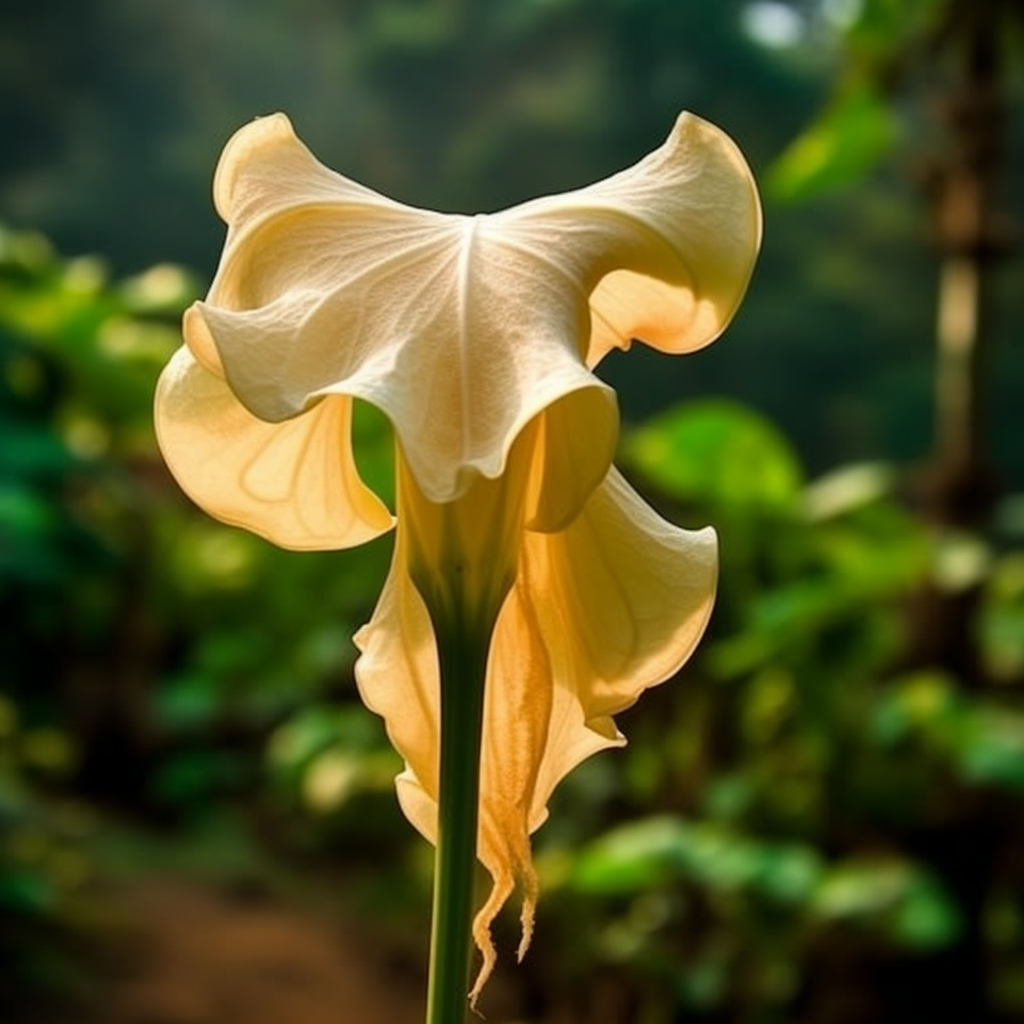Story of Day :
Contents
The Angel’s Trumpet Plant: Your Complete Guide and Care Tips
When it comes to adding a touch of exoticism to your garden, the angel’s trumpet plant is definitely one of the top picks. Native to South America, this ornamental shrub boasts large, trumpet-shaped flowers that hang down from its branches in a mesmerizing spectacle of colors and scents.
Plant Overview
- The scientific name for the angel’s trumpet plant is Brugmansia.
- It belongs to the Solanaceae family, which also includes tomatoes, potatoes, and tobacco plants.
- The most common varieties are B. suaveolens (white flowers), B. versicolor (pink flowers), and B. sanguinea (red flowers).
- The plant can grow up to 20 feet tall if left unpruned.
Care Instructions
If you want your angel’s trumpet plant to thrive in your garden or home, here are some care tips you should keep in mind:
Soil Requirements
- The soil needs to be well-draining but not too dry or sandy.
- You can mix sand or perlite with regular potting soil for better drainage.
- Add organic matter like compost or aged manure every year for nutrients.
Sunlight Requirements
Angel’s trumpets need plenty of sunlight as they require at least 6 hours of direct sunlight every day. If grown indoors kept them near windows where they can receive enough light an alternative will be installing grow light bulbs that provides sufficient lighting conditions.Angels’ trumpets do not tolerate cold and hot temperature extremes. It is therefore advisable to keep them in such an environment with the right temperatures to enable proper growth and healthy flowering.
Watering Requirements
- Avoid overwatering or underwatering the plant.
- The soil should be moist, not soaked or bone-dry.
- Water your Angel’s trumpet at least once a week giving it enough water for the roots to absorb depending on how dry and humid the weather condition is at that moment.
Fertilizer Requirements
You can use a balanced, slow-release fertilizer like 10-10-10 every four weeks during growth season (spring through fall) but don’t fertilize in winter when the plant is dormant.
Pests and Diseases
The Angel’s trumpet plant may suffer from different pests such as spider mites, aphids or whiteflies which are usually attracted by its fragrant flowers. In terms of diseases, they are susceptible to fungal infections if exposed to high humidity levels for too long.
It is important you take preventive measures such as frequently inspecting your plants before bringing them indoors to prevent infestations of spider mites etc.If you identify any signs of pests infestation on your plants use pesticides specifically formulated for this purpose always following instructions indicated on pesticides bottles carefully. If there are signs of diseases consult with specialist gardeners near you who will recommend treatments that should cure your problem quickly without causing further harm
to both plants involved in treatment process).
Safety Precautions
If ingested angel’s trumpets can cause hallucinations, dizziness among other health issues hence handling angel’s trumpets requires strict adherence to safety measures.
When pruning any part of the plant always use gloves and avoid inhaling or coming in contact with any part of the plant as this can cause irritation, allergic reactions among other health issues. Avoid planting these plants near children’s playgrounds and areas close to pets.
Conclusion
The Angel’s trumpet plant is a wonderful addition to any garden or home that offers a touch of exoticism that differentiates it from other shrubs. With proper care, this plant can thrive for many years bringing joy and beauty to its surroundings. Remember also to take safety precautions while handling Angel’s trumpets so you don’t cause harm to yourself and your loved ones.
